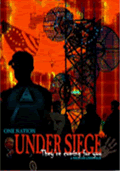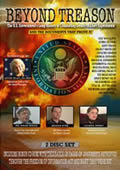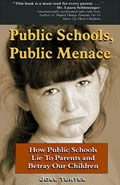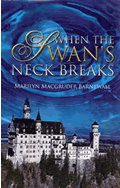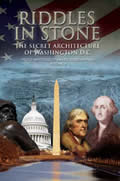By
Marilyn M. Barnewall
June 28, 2009
NewsWithViews.com
Why is high speed rail important to economic recovery? Why should you care about it? There is one primary reason and a large number of secondary ones.
The primary reason: High speed rail service in America will either be built by experts who have ownership positions to protect and the expertise to implement intelligent programs; or, it will be built by government.
For example, California’s projected costs for high speed rail are from $33 to $37 billion. Californians, already living in a bankrupt state, need to know that costs of recent rail projects in Denver and Seattle are running 60 to 100 percent above projections. That happens when government builds such projects rather than the private sector.
When government funds projects, for some reason politicians throw good money after bad to pay for cost over-runs. When completed, such projects are often turned over to private investors or government-sponsored entities. They keep the profits. Taxpayers get stuck with original project costs and potential losses. We can all spell Amtrak.
Americans know our rail system has made few – if any – improvements in decades. In fact, Amtrak has regressed. In 1938, a Life Magazine article points with pride to the Atchison, Topeka and Santa Fe which provided service between Chicago and Los Angeles. “Nothing faster” the magazine headline says. The ATSF Railroad made the run (including all depot stops) in 40 hours.
That train was pulled by two 1,800-h.p. Diesel-electric units geared to travel 117 mph and the average speed (including depot stops) was 43.68 mph.
In today’s “modern” America, the Texas Eagle departs Chicago at 1:45 p.m. and arrives in Los Angeles at 9:40 a.m. – three days later. It is 1,747 miles from Chicago to L.A., as the crow flies, -- and we know train tracks take a longer route than crows. The trip requires about 44 hours. The Texas Eagle (at best) averages 39.70 mph. That’s how we can expect government-sponsored projects to run.
Ask yourself how the Interstate Highway system, begun by President Dwight Eisenhower, opened up America for interstate and intrastate trade and travel. Taxes for the treasury increased, too. All of those rest stops, gasoline, food and gift shop purchases, poured tax dollars into State and Federal coffers.
Properly done, high speed rail will do the same for America. Trains traveling up to 200 mph will provide thousands of new jobs and give Americans some much-needed confidence in their country.
The State of Florida bills itself as having “the Most Advanced High Speed Rail Express System Plan in the Country.” Their plan says from 25,000 to 42,000 new jobs will be created. The analysis was done in 2002 by the center for economic forecasting at Florida State University.
In Europe,
Japan and China, great progress in rail travel has, in many instances,
made trains more popular than air travel… reducing the carbon footprint
of air travel.
In Japan, Bullet Trains achieve 200 mph (the record speed is 277 mph…
the best average speed which includes stops at depots along the way is
164 mph).
In Japan, you can leave Tokyo on a Shinkansen (translated “New Trunk
Line”) Bullet Train, travel an average of 131 mph and arrive at
Aomori in three hours and five minutes. The distance between Tokyo and
Aomori by rail is about 670 km – or, 402 miles. In America, to go
from Chicago, IL to Omaha, NE (431 miles or 694 km) takes 14 hours…
an average of 28.71 mph.
The Bullet Trains were implemented by Japan in the mid-1960s and today, using the above example, garner a 67% market share of travel between Tokyo and Aomori. The airlines serve only 33 percent of travel between these two cities.
Speed is important – and construction largely determines the ability to achieve the maximum speed available. In France, when the TGV high-speed operation from Paris to Marseille shortened travel time between the two cities from just over 4 hours to 3 hours, market share jumped to approximately 60%. Prior to that, it carried only 40 percent market share. To gain public support for rail travel and resultant market share, the quality of high speed rail construction is critical.
Under the government plan, stimulus funds for the construction of a regional network of “faster passenger rail lines” will have its hub in Chicago. Big surprise there – hometown boy makes good… and shares the success with political cohorts and cronies. Obama’s words “faster passenger rail lines,” however, are misleading. “Faster passenger rail lines” do not equate to “high speed rail.” If all the Obama administration wants to achieve is make trains faster, it can do what the Atchison, Topeka and the Santa Fe did in 1938: Put two engines on the train and remove the wooden crossties that hold the tracks together and replace them with cement crossties designed to handle faster trains.
Here’s a link to the map provided by Transportation Secretary Ray LaHood who has requested stimulus funds to begin high speed rail development.
Because
Chicago is home to the man in the White House, we may now define “fly-over
country” differently than before. According to the President, it
once was that part of America where, in fear of progress, people hold
on to their Bibles and their guns. Chicago, under Obama’s “faster
passenger rail lines” plan, suddenly emerged as the non-fly over
hub of faster rail service. Hmmm… will the nation’s capitol
be moved to Chicago next?
Chicago as the hub for high speed rail worries me. My brother lived North
of Chicago and for years I drove from O’Hare to his house on the
same highway when I visited. After more than ten years, the City of Chicago
never completed road repairs on that highway. How can workers employed
by government who can’t repair a highway in a timely manner build
something as complex as a high speed rail system? How timely will their
work be?
When is the last time you saw a government project planned or run efficiently or on budget? Do you recall a government-sponsored program that didn’t hand taxpayer money to political cronies like peppermint candy? One might also ask how many favors will be passed out to elitists… companies like Blackstone, the Carlyle Group, BlackRock, J.P. Morgan, Citigroup, Goldman Sachs, and others?
Maybe Acorn will be invited to create a high speed rail hedge fund? As I write this, Carlyle, BlackRock and Blackstone appear to be investing in banks – not bad banks, just banks in difficulty – at bargain prices.
There is an alternative to having government build America’s high speed rail system. A private company has offered a high speed rail deal to the government – years ago. The deal offers high speed rail, not just “faster trains.” It promises to use no taxpayer funds. I repeat, no taxpayer money… just private capital.
To which taxpayers would this private company make high speed rail available? Well, let’s look at another map and compare it with the Obama administration’s high speed rail map.
As you can see, this plan brings high speed rail to all taxpayers – who will NOT be paying for it. If we can let go of our Bibles and guns long enough to buy a ticket, even those of us in fly-over country will have access to high speed rail… and so will our local and state economies. New jobs will stimulate our economies, too. All of the country, not just the select Northeast, Chicago, and California Corridors, get high speed rail under this plan.
The offer says the company will: “Build and PAY without liens or encumbrances a total and complete Hi-Speed Bullet type domestic railroad system, based on existing Japanese/Chinese and/or other alternatives.” The offer further states the company will use American employees, suppliers and fabricators. The plans are thorough. Attention has even been paid to using high speed rail for emergency evacuations… what a difference that could have made for Katrina victims!
THE COMPANY WILL “BUILD AND PAY” is a key phrase. It offers American taxpayers a way to avoid paying the hundreds of billions of dollars the high speed rail program will cost – California alone will cost over $50 billion.
I support the concept of high speed rail – necessary to bring America to a transportation par with Japan, China and Europe. However, I prefer that a company experienced in building high speed rail systems pay for it than have government tax me, my children, my grandchildren and my great-grandchildren.
The routing in the offered plan includes New York to Los Angeles, Florida to Seattle, Florida to Los Angeles, New York City to Seattle, Richmond to Sacramento, Seattle to Los Angeles, New York City to Florida – and Texas to Minnesota via the Chicago Corridor up to Detroit.
The proffered plan for high speed rail includes cities like Boston, Philadelphia, Washington, D.C., Cincinnati, Denver, Salt Lake City, El Paso, Dallas/Ft. Worth, Houston, Phoenix – and many others. Taxpayers in Iowa, Montana and Arizona would gain as much benefit as the Northeast and Chicago Corridors.
Logic tells me the best way to update America’s rail system so it equals the rest of the world is to let experts in high speed rail build the national grid and let local governments using stimulus funds build “faster train service” that connects communities to it.
|
Subscribe to the NewsWithViews Daily News Alerts! |
There is no doubt America will have high speed rail. The primary question is: will we get high speed rail from the private sector? Or, will we get “faster trains” from the public sector? Will an expert build it? Or, will government cronies get the nod?
We need expertise for this project. We need to tell our legislators to keep the intrusive hands of government off high speed rail!
� 2009 Marilyn M. Barnewall - All Rights Reserved
Sign Up For Free E-Mail Alerts
Marilyn Barnewall received her graduate degree in Banking from the University of Colorado Graduate School of Business in 1978. She created the first wealth creation (credit-driven) private bank in America in the 1970s. Prior to her 21-year banking career, she was a newspaper reporter, advertising copywriter, public relations director, magazine editor, assistant to the publisher, singer, dog trainer, and an insurance salesperson and manager.
She was named one of America's top 100 businesswomen in the book, What It Takes (Dolphin/Doubleday; Gardenswartz and Roe) and was one of the founders of the Committee of 200, the official organization of America's top 200 businesswomen. She can be found in Who's Who in America (2005-08), Who's Who of American Women (2006-08), Who's Who in Finance and Business (2006-08), and Who's Who in the World (2008).
Web site:
E-Mail: marilynmacg@juno.com


